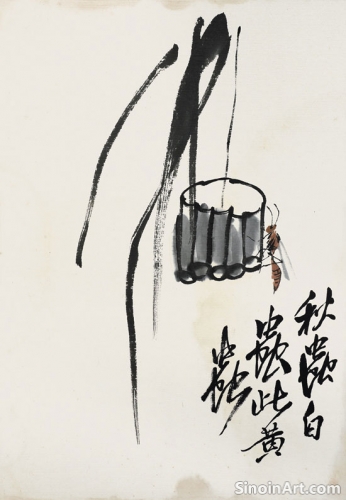Xieyi Painting and the Concept of "Ziran"
|
The concept of "Ziran" (自然), often translated as "naturalness" or "spontaneity," is a cornerstone of Xieyi painting, reflecting the art form's emphasis on aligning with the natural rhythms of the world and allowing the creative process to unfold organically. Ziran represents a conscious alignment with natural forces.  "Ziran" implies that the artist should strive for a sense of effortless ease, allowing their brushstrokes to flow naturally, without forcing or controlling the process. The goal is to let the process of creation unfold organically. It is a purposeful act that aims for an effortless appearance.  The rejection of artificiality, meticulous detail, and over-refinement is also part of the concept of “Ziran.” The artist should avoid the artificial, embracing the natural simplicity of a subject and working with the natural qualities of ink and paper. This embraces the inherent properties of the medium.  The pursuit of "Ziran" requires a deep understanding of the materials and a profound connection with the natural world. The artist aims to allow the natural world to guide the process, rather than imposing their will on it. It is about working with natural forces rather than against them. "Ziran" also implies a sense of authenticity and integrity. The artist aims to create works that are true to their own inner feelings and perceptions, without trying to impress or please others. It comes from a place of personal authenticity. It is about making an honest and authentic expression. |
Tag : naturalness in art, spontaneity, Chinese art ideals, organic art
Related information
- The Cultural Significance of Xieyi: Beyond Artistic Form
- The Use of "Broken Ink" in Xieyi
- The Influence of Chan (Zen) Buddhism on Xieyi
- The Spirit of Xieyi: An Introduction to Chinese Literati Painting
- Xieyi Painting and the Depiction of Trees
This article explores the cultural significance of Xieyi painting, highlighting its connection to Daoist philosophy, Chinese values, artistic heritage, and its role in preserving and expressing Chinese cultural identity.
"Broken Ink" (pòmò) is a key technique in Xieyi painting, involving layering wet ink to create rich and varied tones, depth, atmosphere, and a sense of spontaneity, reflecting a controlled approach to the unpredictable nature of ink and water, adding visual texture and depth.
Chan (Zen) Buddhism profoundly influences Xieyi painting, emphasizing intuition, direct experience, mindfulness, and the concept of emptiness, aligning with the art form's focus on spontaneity, self-expression, and the pursuit of truth through art.
Xieyi, often translated as sketching thoughts or freehand style, is a significant genre within Chinese painting. It is characterized by its emphasis on capturing the essence and spirit of a subject rather than its exact appearance. This expressive, spontaneous approach prioritizes the artist's personal emotions and inner vision.
Trees are a powerful subject in Xieyi painting, depicted through expressive brushwork and washes to capture their unique forms, textures, and symbolic representations of longevity, growth, resilience, and the connection between the human and natural realms, conveying both beauty and a profound appreciation for the cycles of life.